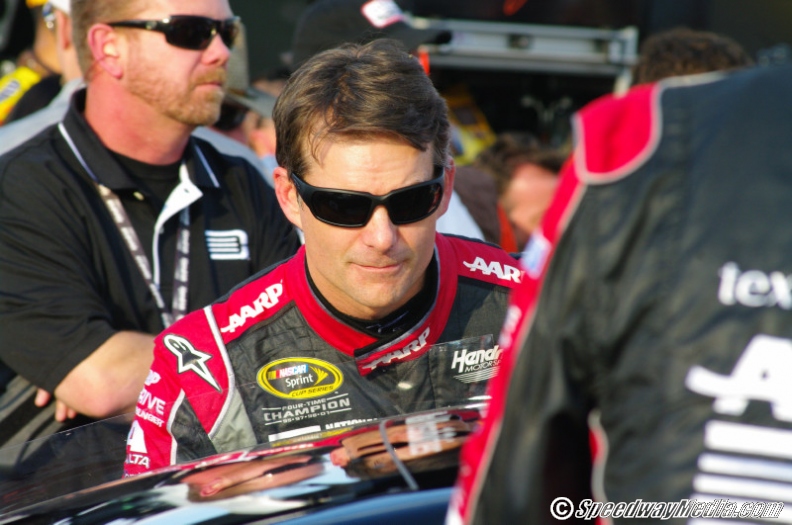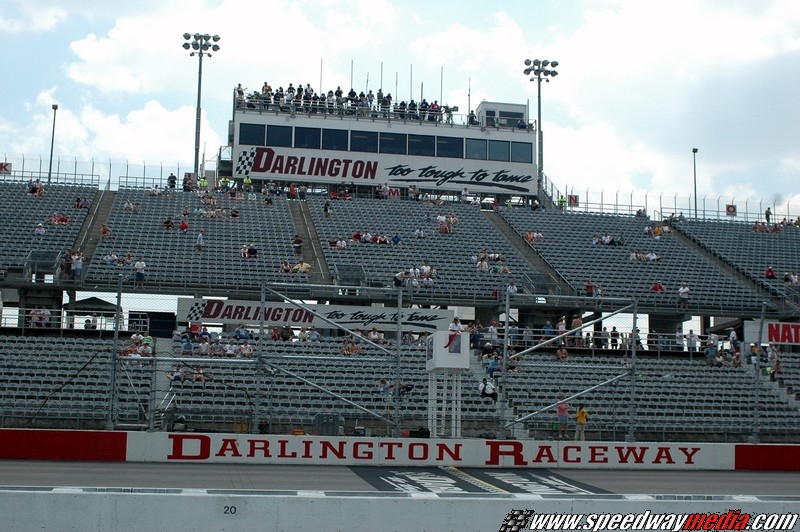Physical therapist and developmental scientist Cole Galloway has devoted his life’s work to helping young children with limited mobility and other physical challenges explore their world.
And he may have just found the solution in the world of NASCAR, developing modified toy race cars to get these babies and toddlers moving in order to understand and explore their surroundings.
“I’m really interested in baby’s behaviors and I’m really interested in getting babies with limited mobility exploring,” Galloway, the founder of the project ‘Go Baby Go’ said. “About seven years ago, we put some very small babies with mobility challenges, four or five months old, behind a mobile robot which they could drive with a joy stick.”
“We did these studies that showed that if we give you independent mobility, even earlier than your first crawling, that those babies scored higher on language scores and they crawled, walked and explored earlier.”
“So, what is it about independent driving that gives you this ability? What we came up with is this ‘drive to explore,’ Galloway continued. “When you’re carried around passively, it’s very different behind the wheel and experiencing motion.”
“As a physical therapist, I have kids with mobility issues that don’t get power chairs until they are five years old so this whole group of kids is sitting around until they are five without movement,” Galloway said. “This is disastrous for baby, brain and behavior, as well disastrous for the families.”
“The more you start to unpack that you realize that we have to do something really different. So, what do you do?” Galloway continued. “You can’t offer $15,000 robots and the power chair industry is not going to produce this for kids under five because that is very new to them.”
“We were forced to go to Toys R Us and basically get a toy car that we then modified,” Galloway said. “We started holding workshops to teach families basically how to build their own modified race cars.”
“You could buy a Lightning McQueen or something cool like a Mater or a Barbie car or a four by four ATV and with simple materials that you would get at Lowes or Home Depot and a couple of hints about bolts and wires and at the end of two hours, you have your own custom-made race car for a kid or a clinic full of kids.”
While Galloway, an Associate Professor of Physical Therapy at the University of Delaware, has help from other professors, as well as a cadre of students and volunteers, he has become a bit of a victim of his own success.
“But now we have another big problem because we get about 50 order requests a month to please build us these cars,” Galloway continued. “The industry is still behind building a pediatric power chair. So, you have to do it yourself.”
“Now we have this small army of parents world-wide and there is this grass-roots effort for this do-it-yourself to help their children,” Galloway said. “All of a sudden, this plastic race car emerges as a solution. Our big problem is that we cannot build enough cars quick enough or do enough workshops to help families build their own.”
For Galloway, his dream of granting mobility has now reached a whole new level, one that he calls sustainability or, in essence, finding funding to keep up with the science he has created.
“Every time we talk, we get further and further unsustainable,” Galloway said. “We just had a workshop in Cincinnati where kids and families showed up, kids got in the race cars, they hit the switches, they moved around and they lit up just like a NASCAR racer.”
“It’s that acceleration that they love and it makes them problem solve in ways they never did,” Galloway continued. “And their brain wants more.”
“Families see it immediately,” Galloway said. “They don’t see a big, nasty black power chair. Instead they see a bright pink Barbie car. It’s the real deal.”
“That’s what these kids and families want but the problem is that we have done a good job of outreach but we cannot keep up with the demand.”
While the car itself is similar to NASCAR, it is also the feeling behind the wheel that mirrors the sport for these mobility impaired children.
“The key to the whole thing is that the kids get the same feeling that a race car driver gets behind the wheel,” Galloway said. “That ability to explore beyond what I know right now to what I want to know in the future.”
“Kids can hit the switch with their heads if they can’t move their arms and it’s awesome. If the kids have to stand to get that good adrenalin rush, they will stand. If the kids have to put their feet on the ground or throw themselves around a bit, they will do that.”
Galloway admitted that he has other projects in the lab that involve other types of real-world technology.
“But these cars won’t go away,” Galloway said. “It’s something that has impact and is driven by the families and clinicians on a grass roots level.”
“It really impacts all that mobility means,” Galloway continued. “This is the mountaintop of a human right because moving is a human right. When you have a kid sitting for years and years, you see what that lack of mobility can do.”
“The lack of that thrill is almost overwhelming in how it changes the brain and the body versus when you get into a race car,” Galloway continued. “When parents see their kids in a race car, the symbol is very, very different than a wheel chair.”
“A wheel chair is ‘give up’ and a race car is ‘get up and go.’ It’s about the power and empowering your kid,” Galloway said. “You just built that race car for your kid. It’s overwhelming. To see it each time, with a kid, I’m getting emotional just talking about it.”
While Galloway’s work is based on so many NASCAR parallels, he admitted that he has not even had time to talk in depth with anyone in the sport.
“I haven’t approached anyone in NASCAR in a meaningful way but we will have to do that in the next year,” Galloway said. “The car modification program is going world-wide but it is me and two project leaders and a gaggle of volunteers.”
“There are hundreds of great ideas and so much opportunity that we have to balance with writing grants and teaching students,” Galloway continued. “But every day is another day these kids are sitting. That sometimes makes me want to give this project up because it’s tough. If we are building 10 to 15 cars, you feel like I’m not sure we will ever get there.”
“We try to do what we can do.”
For more information on Galloway’s project ‘Go Baby Go’ visit http://www.udel.edu/PT/About%20Us/People/galloway.html#BABY or on Facebook .








Much Love from Poland Professor. Keep up the good work and anything you can publish or blog about that helps out the grass roots effort is much appreciated. Wishing you luck with support from Nascar.